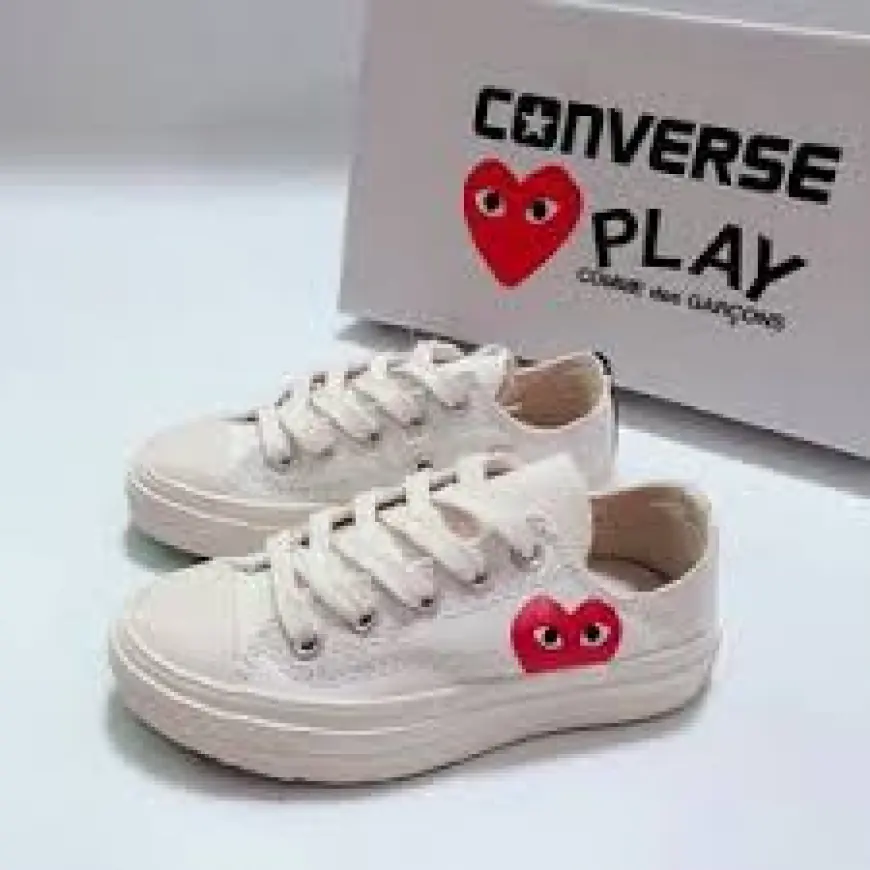Comme des Garçons A Revolutionary Fashion Brand
Comme des Garçons A Revolutionary Fashion Brand

Comme des Garçons is a Japanese fashion brand that has had a profound influence on the fashion industry. Known for its avant-garde designs, innovative concepts, and willingness to challenge conventional norms, the brand has made a name for itself as a trailblazer in the world of high fashion. Founded by designer Rei Kawakubo in 1969, Comme des Garçons has consistently pushed the boundaries of what is considered "fashion," offering a unique perspective that blends art, culture, and wearable design in ways that continue to captivate fashion enthusiasts around the world.
The Origins of Comme des Garçons
The name "Comme des Garçons," which translates from French to "like boys," reflects the brand’s ethos of rejecting traditional gender norms. Rei Kawakubo, a former student of art and literature, founded the brand after initially working in the advertising industry. Her decision to start designing clothes was driven by a desire to create something new and experimental, which was radically different from the established fashion of the time.
Kawakubo's first collection was launched in 1969 in Tokyo, but it wasn’t until the early 1980s that Comme des Garçons started gaining international recognition. Kawakubo’s designs were groundbreaking, combining elements of deconstruction, asymmetry, and an often unorthodox use of materials. Rather than following mainstream trends, she sought to challenge the very concept of clothing by altering the shape, structure, and fabric of garments, offering an alternative vision of beauty.
Rei Kawakubo: Visionary Designer
Rei Kawakubo’s role as the visionary behind Comme des Garçons cannot be overstated. Her philosophy is grounded in the belief that fashion is an art form, meant to provoke thought and challenge societal expectations. Kawakubo is known for her minimalist yet complex designs, often incorporating elements of deconstructionism, where garments appear unfinished or deliberately irregular. This concept subverts traditional notions of beauty and perfection in fashion.
One of Kawakubo’s most significant contributions to the industry was her ability to make clothing that felt conceptually new, even when using conventional fabrics. She experimented with unconventional shapes, unexpected cuts, and sometimes distorted proportions that defied the typical male or female silhouette. Her collections were known to have an intellectual edge, drawing inspiration from various sources, such as art, philosophy, and cultural movements, which further contributed to the brand’s avant-garde appeal.
Defying Fashion Norms
Comme des Garçons has been at the forefront of challenging traditional notions of fashion. In the 1980s, when the Western fashion industry was dominated by designers who adhered to the traditional ideals of luxury and femininity, Comme des Garçons presented a stark contrast. Kawakubo's designs often featured asymmetrical cuts, oversized silhouettes, and garments that didn’t always follow the typical structure of clothing.
For instance, her 1981 collection, which featured pieces with raw, unfinished hems and intentionally visible stitching, was a revolutionary departure from the polished, sleek garments that were popular at the time. This collection was seen as controversial, but it also earned the brand global recognition, and the avant-garde, deconstructed aesthetic became a hallmark of Comme des Garçons’ identity.
The brand’s early collections were also characterized by a bold use of dark, often somber colors, including shades of black, gray, and navy. These hues became central to Comme des Garçons’ signature look, alongside the frequent use of unusual, sometimes "ugly" fabrics that didn’t adhere to traditional ideas of luxury or refinement.
Collaborations and Commercial Success
Although Comme des Garçons is known for its avant-garde, high-fashion designs, the brand has also found success through collaborations and more accessible product lines. Over the years, Comme des Garçons has teamed up with numerous brands, such as Nike, Converse, and Louis Vuitton, merging the worlds of streetwear, luxury fashion, and mainstream culture. These collaborations have introduced the brand to a broader audience, while maintaining its identity as a disruptive force in the fashion world.
One of the most iconic collaborations came in 2002 when Comme des Garçons worked with the American sneaker brand Converse to create a limited-edition line of Chuck Taylor sneakers. The collaboration reinterpreted the classic shoe with the signature deconstructed Comme des Garçons style, making it both a high-fashion piece and a streetwear essential. Similarly, the brand’s partnership with Nike in 2017 introduced a collection of minimalist yet highly stylized sneakers that incorporated both functionality and avant-garde design.
Additionally, the brand’s more accessible line, Comme des Garçons Homme, offers a wider range of clothing that reflects the same innovative spirit but with a more wearable and practical approach. This allows the brand to cater to a broader consumer base while retaining its core identity as a leader in cutting-edge fashion.
Iconic Pieces and Collections
Comme des Garçons is known for its memorable runway shows, which often feature bold and unconventional designs that challenge the boundaries of fashion. One of the most iconic collections from the brand was the "Boys" collection in 1993. The collection presented oversized, shapeless garments that blurred the lines between masculine and feminine styles, reinforcing the brand’s philosophy of rejecting conventional gender roles in fashion.
Another memorable collection was the 2016 Spring/Summer collection, which featured models wearing voluminous, sculptural garments that appeared almost like architectural structures. These designs, with their exaggerated silhouettes, made a statement about the power of fashion as art, demonstrating Kawakubo’s ability to transform clothing into a visual statement.
In addition to its collections, Comme des Garçons is known for its perfumes, accessories, and home décor, all of which carry the same avant-garde philosophy. The brand’s perfume line, for example, includes fragrances that defy traditional expectations of scent, with some featuring complex, unusual notes that evoke emotion and challenge conventional ideas of what a perfume should be.
Legacy and Influence
Comme des Garçons’ influence on the fashion industry is undeniable. The brand’s avant-garde approach has paved the way for other designers who seek to push the boundaries of design, art, and culture. Rei Kawakubo's vision of fashion as an intellectual and artistic pursuit has inspired countless designers and artists, making her one of the most respected figures in the fashion world.
Comme des Garçons’ commitment to defying norms, challenging expectations, and offering a platform for creative expression continues to resonate with new generations of fashion lovers. Through its groundbreaking designs, daring collaborations, and dedication to innovative fashion, Comme des Garçons has firmly established itself as a brand that reshapes the definition of what fashion can be.
What's Your Reaction?
 Like
0
Like
0
 Dislike
0
Dislike
0
 Love
0
Love
0
 Funny
0
Funny
0
 Angry
0
Angry
0
 Sad
0
Sad
0
 Wow
0
Wow
0

















































